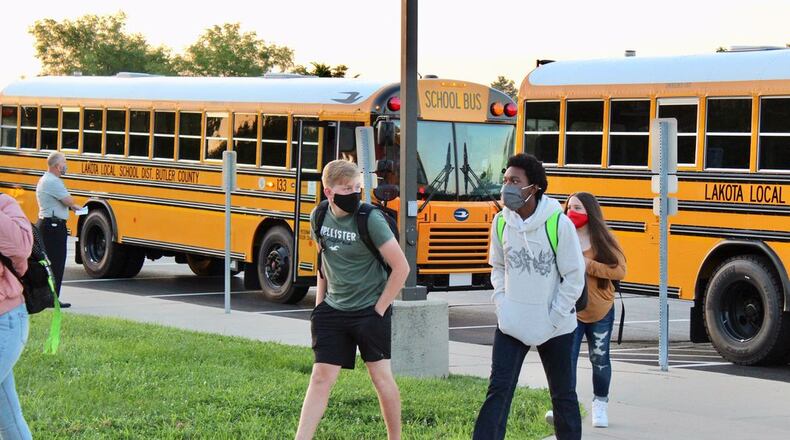Dr. Bruce Vanderhoff, chief medical officer for the Ohio Department of Health said improved coronavirus testing has led the “CDC to allow two new options for quarantining that will be reasonable for many Ohioans.”
Besides the previous mandated 14-day quarantine option, which has played havoc in recent months in local schools and those across the state by causing severe school staffing shortages and forcing some districts to cease in-person classes, there are two new, shorter options, said Vanderhoff.
Now available to area schools, if adopted as expected by city and county health officials, are the options of a 10-day quarantine that does not require testing, provided there are no symptoms, and a seven-day option with a negative test, provided there are no symptoms.
Butler County Health Commissioner Jennifer Bailer’s department released a statement after the CDC’s Wednesday announcement saying: “Butler County General Health District continues to follow the previously established guidelines for release from quarantine of close contacts (14 days).”
“When the Ohio Department of Health has a chance to review these newly established CDC guidelines and issues a statement for Ohio, we will make any necessary changes,” Bailer said.
Officials at Warren County’s largest school system in Mason welcomed the state changes.
“We are glad to see public health officials acknowledge what we have seen from tracking our COVID positive and close contact quarantine data since August,” said Tracey Carson, spokeswoman for Mason Schools.
The coronavirus spread, said Carson, “is not happening in schools, and reducing the amount of time that students have to be out of the classroom due to close contact exposure will be good for those students’ mental health and academic needs.”
“We understand that our Warren County public health partners are working with the Ohio Department of Health to change their guidelines and contact tracing procedures in alignment with the new CDC guidelines,” she said.
Other area school officials did not respond immediately late Friday afternoon when asked about the impact of the new state rules.
Holli Morrish, spokeswoman for Talawanda Schools, said officials there needed more time to study the effects the two new quarantine options may have on its schools.
“We just received the (state) letter and plan to meet very early next week to determine what changes we need to make to our procedure and communications,” said Morrish.
Officials at Fairfield and Kings schools also said Friday they plan to meet Monday to discuss how the additional quarantine options will change their protocols when dealing with infected and possibly infected teachers, staffers and students.
For months, on CDC guidance, people closely exposed – within six feet for more than 15 minutes - to a positive case of COVID-19 have been told to quarantine for 14 days. That’s because people can be infected with the coronavirus during the days after exposure and pass the virus on to others before they know they are infected.
Approval of more quarantine options was anticipated by Lakota Schools Superintendent Matt Miller.
“We have a lot of people being quarantined just because of where they sat that day (in school),” said Miller earlier this week during an online community chat.
Lakota has been one of the few area schools to conduct all in-person classes since after the first week of the current school year semester starting in August.
Like other area districts, the 22-school district has scrambled in shuffling teachers, substitute instructors and non-teaching staffers to fill the many 14-day vacancies forced by the old quarantine rules.
Without some change to quarantine protocols, warned Miller, “the second semester will be different” in regards to the availability of live classes.
About the Author

